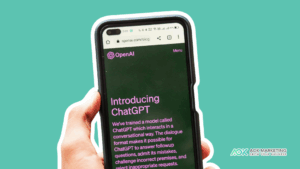When running Pay-Per-Click (PPC) campaigns, tracking conversions is essential to understand which strategies are driving results and how to optimize your budget effectively. Conversion tracking enables you to measure the actions users take after clicking on your ads, providing insight into what’s working and what’s not.
In this guide, we’ll explore the best conversion tracking methods for PPC campaigns, offering you actionable advice to improve your marketing efforts and rank higher in search results.

Why Conversion Tracking Matters in PPC Campaigns
Conversion tracking is more than just counting clicks—it provides valuable insights into customer behavior, return on investment (ROI), and overall campaign performance. By tracking conversions, you can:
Optimize Ad Spend: Focus your budget on keywords, ads, and strategies that drive the most conversions.
Improve ROI: Conversion tracking lets you allocate resources to the channels with the highest return.
Refine Targeting: Identify what demographics, behaviors, or interests are converting the most, and adjust targeting accordingly.
Enhance Ad Copy: Understand which messages resonate best with your audience, so you can improve your ad copy for better performance.
Key Types of Conversions to Track in PPC Campaigns
Before diving into specific tracking methods, it’s important to define what constitutes a “conversion” in your PPC campaigns. Here are a few common examples:
Purchases: Sales made through your website or ecommerce platform.
Leads: Form submissions, email sign-ups, or other lead generation actions.
Downloads: When users download content such as eBooks, whitepapers, or apps.
Phone Calls: Calls made to your business via a click-to-call ad.
Engagement: Specific actions on your website, such as video views or button clicks.
Now, let’s explore the top conversion tracking methods that can help you maximize results from your PPC campaigns.
1. Google Ads Conversion Tracking
Google Ads is one of the most popular platforms for running PPC campaigns, and it offers built-in conversion tracking that’s easy to set up. With Google Ads Conversion Tracking, you can track a wide range of actions, including online purchases, sign-ups, and phone calls.
How to Set It Up:
-Go to your Google Ads account and navigate to the “Conversions” section under “Tools & Settings.”
-Click “+ Conversion” to create a new conversion action.
-Choose the type of conversion you want to track, such as website actions, phone calls, or app installs.
-Google will provide you with a tracking code (also called a conversion pixel) that you can add to your website or landing page. For eCommerce tracking, you can integrate the pixel with your checkout page.
Key Benefits:
Real-Time Data: Google Ads provides real-time tracking, so you can monitor conversions as they happen.
Customizable Goals: You can track multiple types of conversions, from purchases to leads, allowing for a comprehensive view of campaign performance.
Automatic Tagging: Google Ads offers automatic tagging to track performance across different campaigns and keywords seamlessly.
Google Ads Conversion Tracking is highly effective for advertisers who are deeply invested in the Google ecosystem and need granular insights on performance metrics.
2. Google Analytics Conversion Tracking
Google Analytics goes hand-in-hand with Google Ads, offering advanced tracking options for PPC campaigns. By linking your Google Ads account to Google Analytics, you can track not only conversions but also user behavior after they click on your ads.
How to Set It Up:
1. First, ensure that your Google Ads account is linked to Google Analytics.
2. In Google Analytics, navigate to “Admin” and under “View,” click “Goals.”
3. Click on “+ New Goal” and choose from predefined templates or create a custom goal.
4. Set the goal type (e.g., destination URL, duration, pages per session, or event).
5. Once the goal is created, it will automatically track conversions related to the set criteria.
Key Benefits:
Behavioral Insights: Google Analytics provides data beyond conversions, such as bounce rate, time on site, and page views, allowing you to see how users interact with your site.
Funnel Analysis: With Google Analytics, you can build conversion funnels to track where users drop off and optimize accordingly.
Cross-Channel Tracking: Google Analytics shows how various channels (organic, paid, social, etc.) contribute to conversions, giving you a holistic view of your marketing efforts.
This method is ideal if you want deeper insights into user behavior and are running PPC campaigns alongside other digital marketing efforts.
3. Facebook Pixel Tracking
If you’re running PPC campaigns on Facebook, the Facebook Pixel is a must-have tool for tracking conversions. The Facebook Pixel is a piece of code that you place on your website to track actions like purchases, form submissions, and page views driven by your ads.
How to Set It Up:
1. In your Facebook Ads Manager, go to “Pixels” under the Events Manager section.
2. Click “Set Up Pixel” and generate the pixel code.
3. Add the pixel code to your website, either manually or through an integration (e.g., via Google Tag Manager or a platform like Shopify).
4. Use Facebook’s Event Setup Tool to track specific actions, like button clicks or purchases.
Key Benefits:
Cross-Device Tracking: Facebook Pixel can track conversions across multiple devices, giving you insight into how users interact with your ads on both mobile and desktop.
Lookalike Audiences: Use conversion data to create lookalike audiences that target users similar to those who have already converted.
Retargeting: Facebook Pixel allows you to retarget users who have interacted with your site but haven’t yet converted, increasing your chances of securing a sale.
Facebook Pixel is ideal for businesses heavily invested in social media advertising and those looking to leverage retargeting opportunities.
4. Third-Party Conversion Tracking Tools
While Google Ads and Facebook Pixel are powerful tools, there are also third-party platforms that offer advanced tracking capabilities, especially if you’re managing PPC campaigns across multiple platforms.
Popular Tools:
CallRail: Ideal for businesses that rely on phone calls as conversions. CallRail integrates with Google Ads, providing detailed analytics about call sources, call duration, and keywords that drove the call.
HubSpot: HubSpot’s marketing platform allows you to track PPC conversions while integrating them with your CRM. It’s perfect for B2B businesses looking to nurture leads post-conversion.
Kissmetrics: This tool helps track detailed customer journeys, from the first ad click to the final conversion, offering in-depth behavioral insights.
Key Benefits:
Unified Data: These tools allow you to track conversions from multiple platforms in one place, making it easier to analyze performance across channels.
Detailed Attribution Models: Third-party tools often provide advanced attribution modeling, so you can understand how different touchpoints contribute to conversions.
Custom Reports: Many platforms offer customizable reports, allowing you to focus on the metrics that matter most to your business.
If you’re managing large-scale PPC campaigns or need advanced tracking features, third-party tools can offer a more comprehensive view of your marketing efforts.
Best Practices for Conversion Tracking
To ensure that your conversion tracking is effective, follow these best practices:
Use UTM Parameters: UTM codes help track where traffic is coming from and which campaigns are performing best. Apply UTM parameters to your ads for more detailed tracking.
Set Clear Conversion Goals: Be specific about what actions you’re tracking, and ensure they align with your business objectives.
Test and Optimize: Continuously test different ad variations, landing pages, and targeting strategies to see what drives the highest conversions.
Monitor Attribution Models: Pay attention to the attribution model you’re using (e.g., last-click, first-click) to ensure you’re giving credit to the right touchpoints in the customer journey.
Conclusion
The best conversion tracking method for your PPC campaign depends on the platform you’re using, the type of conversions you’re tracking, and your business goals. Google Ads Conversion Tracking and Google Analytics provide robust tools for most PPC advertisers, while Facebook Pixel is essential for social media campaigns. Third-party platforms like CallRail and HubSpot offer advanced options for businesses managing multi-channel campaigns.
By implementing these conversion tracking methods and following best practices, you’ll gain deeper insights into your PPC campaigns, optimize ad spend, and drive better business results.
About The Author
Marketing Team
The AOK Marketing Team is a diverse group of amazing individuals driven to help all of our clients succeed. Great people are everywhere, and we believe that people should control their workday, their work environment, and where they live. We have team members in 9 countries: United States, Canada, Egypt, Belgium, Ireland, Australia, India, Pakistan, and Hong Kong.
How can we help you?





